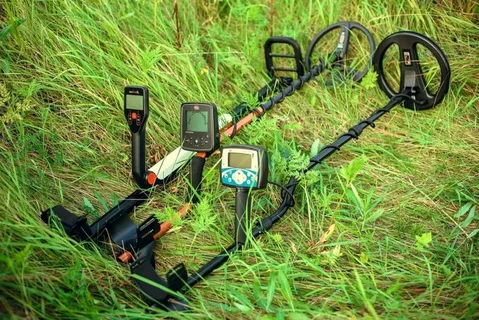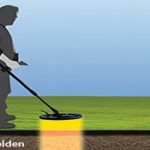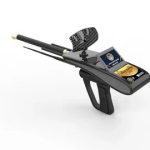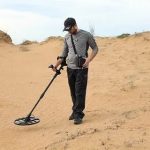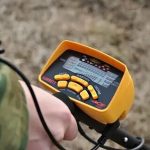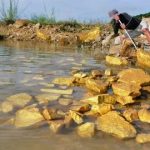Find Gold: Discovering the Best Techniques to Strike It Rich
Gold has long been a symbol of wealth and prosperity, and for centuries, people have been searching for the best techniques to find this precious metal. Whether you are an amateur prospector or a seasoned miner, knowing the most effective methods for finding gold can make all the difference in your success. In this article, we will explore some of the best techniques and tools for uncovering gold and maximizing your chances of striking it rich. Whether it’s panning in a river, using metal detectors, or other innovative methods, there are countless ways to find gold – and we are here to help you discover them.
Discovering the best techniques to find gold involves a combination of research, exploration, and hands-on prospecting. Some key methods include researching historical gold mining areas, using metal detectors, panning for gold in rivers and streams, and exploring abandoned mine sites. It’s important to understand the geological characteristics of gold deposits and to be persistent and patient in the search for this valuable metal. Joining local prospecting clubs and learning from experienced prospectors can also provide valuable insights and techniques for finding gold.
How to Use a Metal Detector to Find Gold
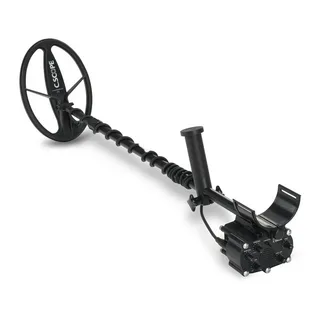
To use a metal detector to find gold, start by choosing the right type of metal detector for gold prospecting. Look for a metal detector with a high frequency, as this will make it more sensitive to smaller gold nuggets. Next, research and understand the local geology and history of gold in the area where you plan to search. Once on site, ground balance your metal detector to account for mineralized soil which can interfere with detecting small gold nuggets. Then, begin swinging the metal detector in a slow and deliberate manner, scanning the ground for potential gold targets. Pay close attention to any unusual or consistent signals, and dig when you have a strong indication of a possible gold target. Always respect local laws and obtain permission before prospecting on private property or protected areas. Keep in mind that finding gold with a metal detector requires patience, practice, and persistence.
The Best Locations to Find Gold Deposits

1. Western Australia: The Goldfields region in Western Australia is renowned for its high gold production and is considered one of the best locations to find gold deposits. The area is home to several major gold mines and has a rich history of gold mining.
2. Nevada, USA: Nevada is a prime location for gold prospecting, with the state being the largest producer of gold in the United States. Areas such as the Carlin Trend and the Battle Mountain-Eureka Trend are known for their significant gold deposits.
3. Alaska, USA: The state of Alaska is also a popular destination for gold prospectors, with its vast wilderness offering ample opportunities for finding gold. The famous Klondike region in Alaska has been a major gold producer for over a century.
4. South Africa: The Witwatersrand Basin in South Africa is one of the world’s largest gold deposits and has historically been a major source of gold production. The region is known for its deep-level mining operations and holds significant untapped potential for gold exploration.
5. Canada: Canada is home to several gold-rich regions, including the prolific Red Lake Gold District in Ontario and the famous Yukon Territory, where the Klondike Gold Rush took place in the late 19th century. These areas continue to attract gold prospectors seeking new deposits.
Prospecting Tips for Finding Gold in Rivers
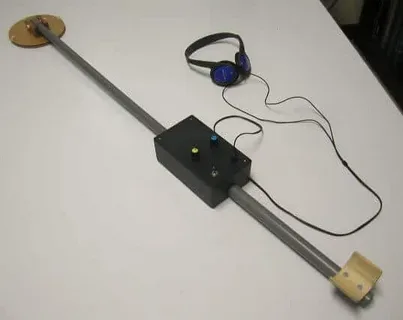
Prospecting for gold in rivers can be a rewarding experience, but it requires careful technique and knowledge of where to look. Here are some tips to help you find gold in rivers:
1. Look for areas where gold is likely to accumulate, such as inside bends in the river, areas downstream of large boulders or other obstacles, and bedrock crevices.
2. Use a gold pan to carefully scoop up gravel from the river bottom and then gently shake and swirl the pan to allow the heavier gold to settle to the bottom.
3. Consider using a sluice box, which is a long, narrow box with riffles on the bottom that trap gold as the water flows through. Make sure to set it up in a spot where the water is flowing quickly enough to wash away the lighter materials but not so fast that the gold will be carried away.
4. Use a metal detector to help locate gold nuggets and other larger pieces of gold that may be buried in the riverbed.
5. Be patient and persistent – finding gold in rivers can take time and effort, but the rewards can be well worth it.
By following these tips and putting in the time and effort, you can increase your chances of finding gold in rivers. Good
Tools and Equipment for Hunting for Gold

1. Metal detector – A metal detector is a crucial tool for hunting for gold, as it can help you locate buried gold nuggets or deposits.
2. Gold panning kit – A gold panning kit typically includes a pan, classifier, tweezers, and vials for collecting and storing your findings. This simple yet effective tool is essential for manually extracting gold from riverbeds and streams.
3. Sluice box – A sluice box is a longer, narrow box with riffles and mats used to trap and collect gold particles as water flows through it. It’s a popular tool for gold prospecting in rivers and streams.
4. Suction dredge – For more extensive gold prospecting, a suction dredge can be used to suck up sediment from river bottoms and collect any gold particles within it.
5. Gold metal detector – Specifically designed to detect gold, a gold metal detector is more sensitive and calibrated to pick up smaller gold nuggets and particles than a regular metal detector.
6. Shovel and digging tools – A sturdy shovel and digging tools are necessary for digging through soil, gravel, and sand to access potential gold deposits.
7. Gold snuffer bottle – A gold snuffer bottle is used to suck up small gold particles and flakes for easy collection and storage.
8. GPS and maps – Navigation tools such as GPS devices and maps can help you locate gold-rich areas and claim locations for prospecting.
9. Safety equipment – It’s important to have appropriate safety gear such as gloves, durable footwear, and protective clothing when hunting for gold in rugged and potentially hazardous environments.
10. Backpack and carrying gear – Carrying gear such as a backpack, pouches, and containers are essential for transporting your tools and collected gold while prospecting.
The Science Behind How to Find Gold
See also: gold and metal detector
The process of finding gold involves a combination of geology, chemistry, and physics. To locate gold deposits, geologists study the rock formations, mineral compositions, and structural features of a specific area. They look for indicators of gold, such as quartz veins and other gold-bearing minerals.
Once a potential gold deposit is identified, various exploration techniques can be used to further assess its economic potential. Geophysical methods, such as ground-penetrating radar and magnetometry, are often employed to detect subsurface structures and mineralization. Geochemical sampling, including soil and rock sampling, can also help indicate the presence of gold in the area.
In terms of extraction, the process of separating gold from the surrounding rock and minerals involves a series of physical and chemical methods. This may include crushing and grinding the ore to liberate the gold particles, and then using techniques such as gravity separation, flotation, or leaching to concentrate and extract the gold.
Overall, the science behind finding gold involves a thorough understanding of the Earth’s geology, as well as the application of various scientific methods and technologies to identify, evaluate, and extract gold deposits.
Discovering Hidden Gold Mines: A Guide
Discovering Hidden Gold Mines: A Guide is a book that provides practical advice and strategies for identifying and maximizing the potential of hidden opportunities in various aspects of life, including business, career, and personal development. The book offers insights on how to spot potential opportunities that others may overlook, as well as practical steps for tapping into these hidden gold mines. It is filled with real-life examples, case studies, and actionable tips that can help individuals uncover hidden potential and achieve greater success. Whether you’re a business professional, entrepreneur, or anyone looking to uncover hidden opportunities, this guide can help you unlock hidden gold mines in your life.
The Art of Panning for Gold Nuggets
The art of panning for gold nuggets involves using a shallow metal pan to sift through gravel and sediment in search of small traces of gold. This traditional method of prospecting has been used for centuries and requires patience, skill, and knowledge of the area’s geology. Gold panning can be a rewarding hobby and a way to connect with nature while potentially finding valuable treasures. However, it is important to research and obtain any necessary permits or permissions before panning in a specific area, as well as to respect the environment and any regulations regarding mineral rights. Selecting the right location and learning proper panning techniques are also key factors in the success of this activity.
Finding Gold in Unlikely Places: Urban Mining
Finding Gold in Unlikely Places: Urban Mining is a process that involves extracting valuable metals and minerals from electronic waste, old appliances, and other discarded items in urban areas. This practice is becoming increasingly popular as a way to recover precious resources and reduce the environmental impact of mining activities. Urban mining not only helps to conserve natural resources but also provides economic opportunities for recycling businesses and individuals involved in the collection and processing of e-waste. It requires specialized techniques and equipment to extract gold and other valuable metals from electronic components, making it a sustainable and innovative approach to resource management.
The History of Gold Rushes and Discoveries
Gold rushes and discoveries have played a significant role in shaping the history of various regions and countries around the world. The first major gold rush in the United States occurred in 1848, when gold was discovered in California, leading to a massive influx of people from all over the country and the world. This sudden population growth had a profound impact on the development of California and the expansion of the western frontier.
Other significant gold rushes include the Australian gold rush in the 1850s, which brought a surge of prospectors and settlers to the continent, and the Klondike Gold Rush in Canada in the late 1890s. These events not only led to the rapid growth of towns and cities but also spurred technological and economic advancements.
Gold rushes and discoveries have also had environmental and social consequences, including land disputes, labor conflicts, and the displacement of indigenous communities. Despite these challenges, gold rushes have left a lasting legacy on the global economy and continue to be a source of fascination and interest for historians and the public alike.
Exploring the World’s Richest Gold-Producing Regions
Exploring the World’s Richest Gold-Producing Regions showcases the various geographical locations around the world that are known for their significant gold deposits. The book delves into the history, geology, and current status of these regions, providing insight into the factors that contribute to their wealth of gold resources. Readers will gain an understanding of the economic and environmental impact of gold mining in these areas, as well as the cultural significance of gold in different societies. The book also offers a comprehensive look at the methods and technologies used in gold extraction and the future outlook for these regions in the global gold market.

